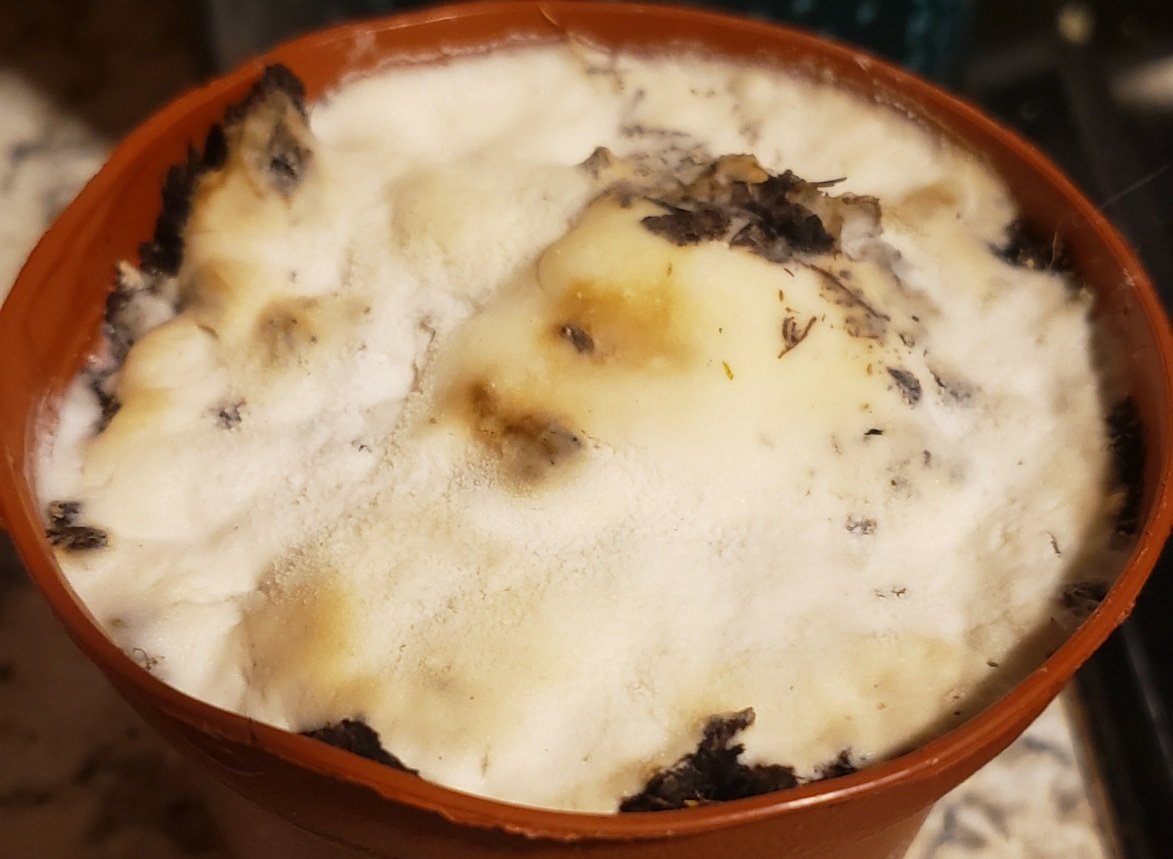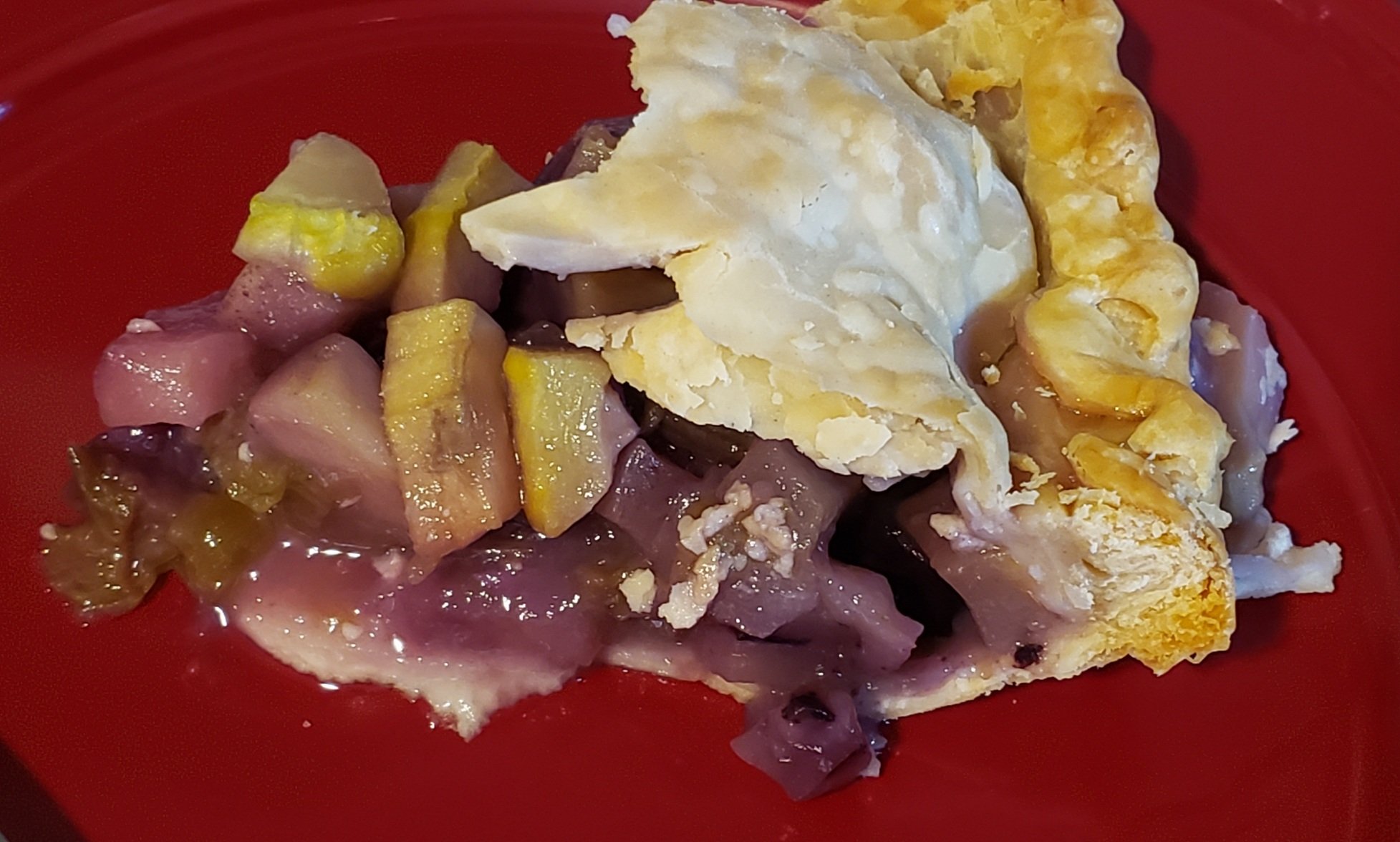- 16 Posts
- 14 Comments

 1·8 months ago
1·8 months agoWelp! It browned in several spots over night. Maybe because of the dirt? Or the heat gun? Or???

Next tests, I’ll need to try a two layer method. (one with a lower layer of baking soda, and another with a toilet paper bottom. That should help to deduce if the dirt was the cause of it).

 6·9 months ago
6·9 months agoFirst issue I found, I needed to add a little water to the mixture so it would keep from pulling up the dirt as I tried to spread it on. Made it so I could just pour it over. Wtich means two things, I’ll see how moisture reacts to it, and have to wait maybe two days for it to dry…which, if so, might make it really difficult in that I’ll have to fill the unit with dirt before we move it (and it is quite heavy without the added dirt).

Update:
Well, I’ll be damned. I used a heat gun and it dried up within seconds…Everything is back on schedule again, 😃

 4·9 months ago
4·9 months agoAlthough it’s a pretty sheltered location, but wouldn’t the baking soda dissipate with any moisture? Humidity, rain, and/or snow?
Edit: I just thought about it, and what I’ll do is run an experiment. I can place some near my kitchen sink’s handle. Water dripping from my hand and the humidity should give me a good idea how it’d work outside.

 2·9 months ago
2·9 months agoOddly enough, they are kind of bland with honey. 😶. Great with butter, though. Still trying to think of something else to try with them, but unfortunately brain is blank. Family won’t help me clean, and am in quite a bit of pain, and being one of the major holiday cooks, I’m kind of stressing a bit, heh. Got so much to clean…I’ll try to think of something to eat with these…I hope, heh.

 2·9 months ago
2·9 months agoHmm! That does sound good.
Lets see.
1/2 c. buckwheat
1 c. unbleached flour
6 Tbls. buttermilk powder (It’s what I happen to have, 🤷♂️ ).
1/2 tsp. Salt
1 Tbls. Sugar
1/4 c. Ground pumpkin seeds.Soften 1 tsp. yeast in 3/4 cup warm water. Mix all ingredients with 1 Tbls. melted butter. Let sit covered for an hour, then place in the fridge over night. Can add more flour the next day if it’s too moist (Can’t remember the liquid to dry ratios, but unimportant for the first part. I can adjust for more/less when necessary).
(update: Ok, that was the perfect amount of liquid. I’ll touch up some more flour when I place it in the fridge…On the other hand. Should have been more pumpkin seeds, or less flours. Meh! Will have to do…maybe I’ll find the will to grind more seeds up before I fry/bake it, heh).
And I would mix it today for a deeper flavor.
Slept pretty horribly last night which makes my pains worse, so I’ll push it back for tomorrow. Which will give me a chance to let it sit.

 1·9 months ago
1·9 months agoAlrighty! I have time to think on it.
Types of dough. Sweet milk, sweet water, yeasty, caky, thick tortilla (pita like).
Sweet Milk : Almond, buckwheat, unbleached flours
Water based : Almond, Rye, Amaranthhttps://youtu.be/hNQaBOHT0EE 🤔 Hmm! A sweet paratha? Pumpkin, sugar, pumpkin seed, nutmeg, and molasses filling. (Using a little almond flour to thicken it up).
https://youtu.be/0roB5cuotEw Then there’s this 2 ingredient Sweet potato flatbread recipe that I could easily modify.
I’ll plan out cooking it around noon CST tomorrow. So I’ve got plenty of time to figure out what I’ll do, 😃

 1·1 year ago
1·1 year agoWoot! Two or three days later, and all the kinks worked themselves out. It’s good as is, but does need one slight modification. The squash around the slits needs to be covered up. That’s why some of them didn’t get the coloration.
I think when I attempt this again, I’ll still up the flour, and to deal with the squash near the slits, I’ll pour over melted butter and sprinkle a little ginger over the top. I bet that will take care of any unwanted flavors.


 2·1 year ago
2·1 year agoHuh! I’ve found recipes for both types, but the precooked filling was all the ones using a pre-cooked crust, and all the others would be better described as a crustless quiche. However, the cooking timee for the latter were nermal cooking times for a pie. Still, though, diluting the zucchini with fruit flavor, is going to be the trick. I know it’s possible cooking and manually stirring it on the stove. Constrained within a pie shell?
Again, I think I’m just going to have to try it.
Alsn, I cut the outer skin off when turning zucchini into a fruit. Plus, I think a larger one might yield more flesh (as I cut out the seed and pulp from them). if I can remember it and am able to, I’ll document the process. (chronic pain sufferer, so I don’t exactly put a lot of effort into being presentable. Just existing is exhausting, Hah!).

 3·1 year ago
3·1 year ago> but my concern with cooking twice would be the moisture content more than the consistency.
Ah! That’s something that escaped me. I’ll need to remember to add a little flour/cornstarch to the filling.
> I’d peel them and then either dice them smallish or cut them into slices maybe a quarter inch thick. Whatever you did with the jam is probably going to work out in a pie shell, except you might consider how sweet it should be.
That’s how I sliced them for the jam. As for sweetness, that won’t be a problem. I’m not a heavy sugar eater, so a small amount will go a long ways, and I have a good eye for the amount I like.
Hmm! The part I’m mostly wondering about would be the convection currents (I think convection is the correct term, 🤔 . Currents caused by heat). Would the 45-55 minutes in the oven yield enough currents to mix the flavors so the squash gets infused with the other flavors? (Zucchini can lose almost all its flavor in place of the fruit). I know cooking the fruit within the shell works with rhubarb and apple (A small tart green apple, tree 15 feet in height, that can be found somewhat wild here in Western Kansas) , rhubarb and grape, and rhubarb and blueberries…
I think I’m just going to have to try it. Nothing attempted, nothing tempting.

 1·1 year ago
1·1 year agoI did find that it can be done arbitrarily. Mind is definitely not into writing about it, though, but here’s the gp code I wrote to look it over.
/* There may exist a 0<=t<s such that s divides both x and (x+(x%d)*(t*d-1))/d. To show this for solving for divisibility of 7 in any natural number x. g(35,5,10) = 28 g(28,5,10) = 42 g(42,5,10) = 14 g(14,5,10) = 21 g(21,5,10) = 7 */ g(x,t,d)=(x+(x%d)*(t*d-1))/d; /* Find_t( x = Any natural number that is divisible by s, s = The divisor the search is being done for, d = The modulus restriction ). Returns all possible t values. */ Find_t(x,s, d) = { V=List(); for(t=2,d-1, C = factor(g(x,t,d)); for(i=1,matsize(C)[1],if(C[i,1]==s, listput(V,t)))); return(V); }One thing that I noticed almost right away, regardless what d is, it seems to always work when s is prime, but not when s is composite.
Too tired…Pains too much…Have to stop…But still…interesting.

 2·1 year ago
2·1 year agoYeah, before my mind decided it didn’t like learning any more, I had learned the gist of Bell and Noll’s calc, then switched to gp a few years later…for which I can not remember why, but I can still remember how to use it fairly well.

 2·1 year ago
2·1 year agoNot sure, (“Older and a lot more decrepit” doesn’t mean “younger an a lot more mentally sound”, heh. Do wish I could change that, but meh, I can’t).
Anyway, I did find a method similar to what you wrote, so I can redefine it in your terms.
A base 20 number is divisible by 7 if the difference between 8 times the last digit and the remaining digits is divisible by 7.
Ok, a little description on a base 20 number (Think Mayan and Nahuatl/Aztec numbers). 0,1,2,3,4,5,6,7,8,9,10,11,12,13,14,15,16,17,18,19 should be considered single digits. So a base 10 number, 7*17 = 119 (1*10^2+1*10+9), would be 7*17 = 5:19 in a base 20 system (5*20+19).
- is 1:8 divisible by 7? (28 in base 10). 8*8 = 3:4. 3:4-1 = 3:3
- is 3:3 divisible by 7? 8 * 3 = 1:4. 1:4 - 3 = 1:1 (1*20+1 = 21).
- is 9:2 divisible by 7? (182). 2*8 = 16. 16-9 = 7 Check.
I’ll just leave that there. So a long weird way of saying, yes, that’s pretty much my reasoning, but not exactly at the same time. As the first message included the base 20 numbers divisible by the base 20 single digits 7, 13, and 17. (Hopefully that came off a little better).
(Note: Saying “base 20 number[s]” is not important overall. Just being overly descriptive to differentiate between base 10 digits and base 20 digits).
- is 1:8 divisible by 7? (28 in base 10). 8*8 = 3:4. 3:4-1 = 3:3

 1·1 year ago
1·1 year agoI’d say it doesn’t exactly equate to anything I’ve tried before, in one way, the green flavor. It isn’t strong, and rather light. The other flavor, on the other hand, reminds me of a faint sunflower seed nuttiness. Though, I did use younger leaves, and no older leaves nor stems as of yet…🤔 I’ll have to try a few more things. Might be interesting with rhubarb and in coffee, too.
Speaking of, I am spending way too much time on this, heh! I’ve got two hats and a pumpkin bag to knit, and a small painting to do ( Maybe more like these ). I’ll just stick to a cloth of some kind, and let her touch it up how she wants. 🤣 .